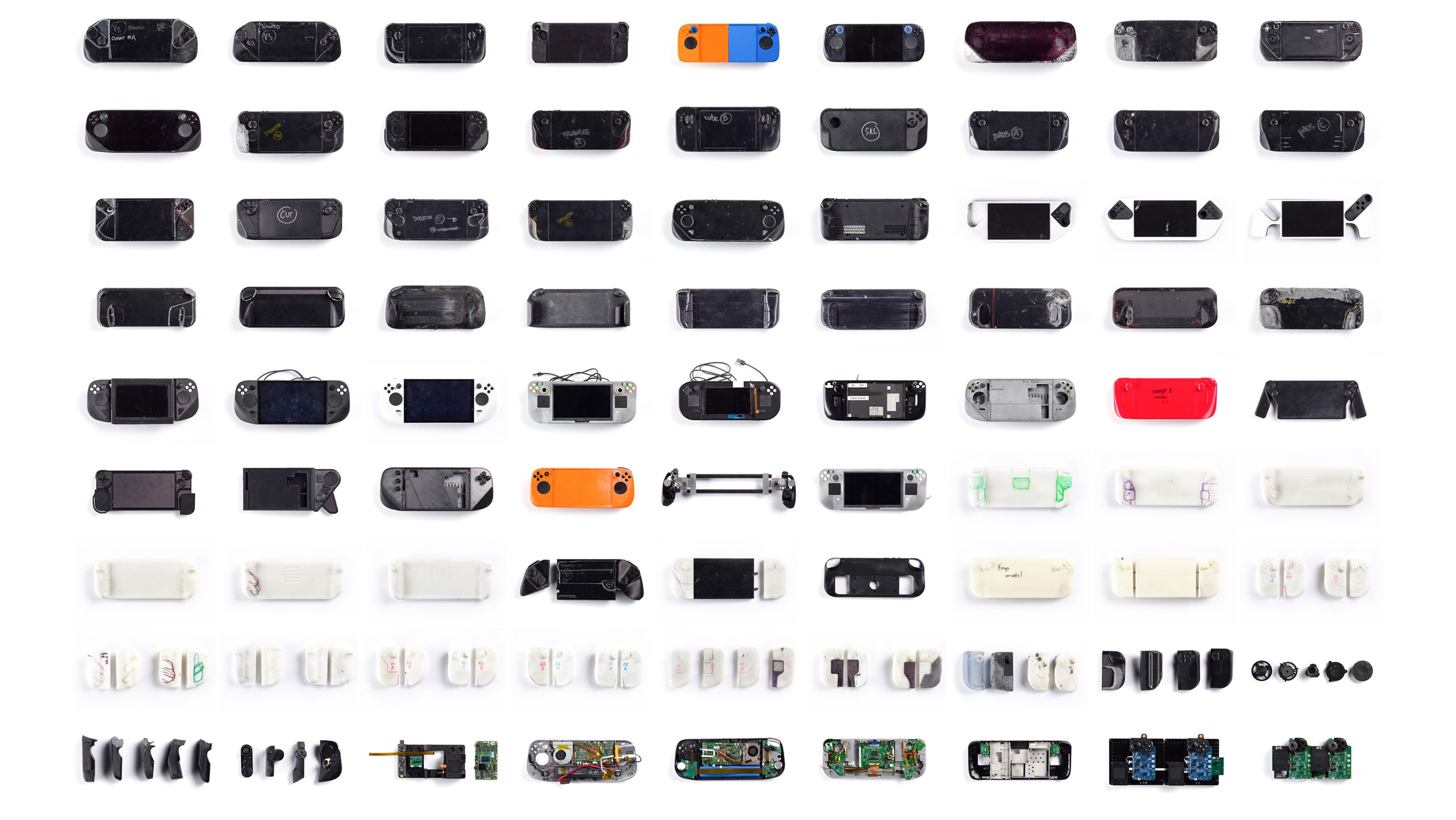Check out Half-Life 2 running on a Steam Deck that never was
Valve has been showing off its Steam Deck prototypes as part of the device's launch in Asia.

The tech industry tends not to show off its first drafts, not so with Valve's Steam Deck. Companies such as Microsoft would rather you imagine that their sleek, oblong gaming machines fell from the sky fully-formed than give you a look into the innumerable failures and rejected versions that had to be made first. Thankfully, Valve has never really shared that philosophy. In the Steam Deck booklet, interviews, and even (slightly hurtful) nicknames, the company has never hid that the process of creating the Steam Deck was one of trial, error, and constant iteration.
The best part is that they (mostly) all still boot, serving as an exciting reminder of how far things have come since.This one has a Picasso APU, at about half of the GPU power of the final Deck. The flatter ergo was an interesting experiment and taught us a ton about comfort. pic.twitter.com/yLwTtDDYloSeptember 12, 2022
That hasn't changed with the Steam Deck's launch in Asia. At press events, Valve has laid out tables with the Decks that didn't make it and, most interestingly of all, given us a look at how one of them ran. Pierre-Loup Griffais, one of Valve's coders who works on the Steam Deck, has given us a quick glimpse at the boot-up process of a Deck that never saw the light of day.
It's noticeably less sleek than the boot process of the final Deck, of course. Most obvious is the fact that before the machine realises it's a Steam Deck and loads up the right UI, it boots into Steam's default Big Picture mode: a nemesis I still have to contend with every day when I play games on my TV.
Big Picture mode will, one day, be replaced by the Deck UI across all of Steam, but it's interesting to see that it's still lurking in there somewhere under the surface.
We get a brief look at the Deck from another dimension running Half-Life 2, as well. Surprise surprise, the Deck was able to play Valve's classic without breaking a sweat, though I admit that some part of my brain—the part that refuses to accept 2004 was 18 years ago—was actually taken aback that the weaker Picasso APU in the prototype didn't have any trouble with the game.
That's a slice of AMD silicon with half the raw graphical processing power of the Aerith APU that ended up in the final handheld gaming PC we have today.
It's an interesting and brief look into a world that wasn't. A world of circular track pads, multicoloured face buttons, and the lingering spectre of Big Picture mode. I kind of like the flatter design on this prototype more than I do the curves of the current model, if I'm honest, although Loup does say that flat design taught Valve "a ton about comfort," probably because it wasn't all that comfortable. Who knows, though, maybe it'll make a return on the next Steam Deck?
Keep up to date with the most important stories and the best deals, as picked by the PC Gamer team.

One of Josh's first memories is of playing Quake 2 on the family computer when he was much too young to be doing that, and he's been irreparably game-brained ever since. His writing has been featured in Vice, Fanbyte, and the Financial Times. He'll play pretty much anything, and has written far too much on everything from visual novels to Assassin's Creed. His most profound loves are for CRPGs, immersive sims, and any game whose ambition outstrips its budget. He thinks you're all far too mean about Deus Ex: Invisible War.

